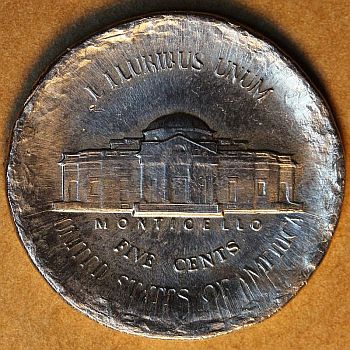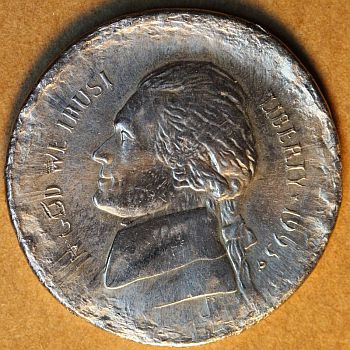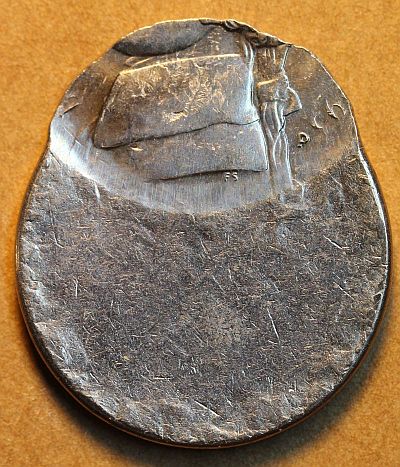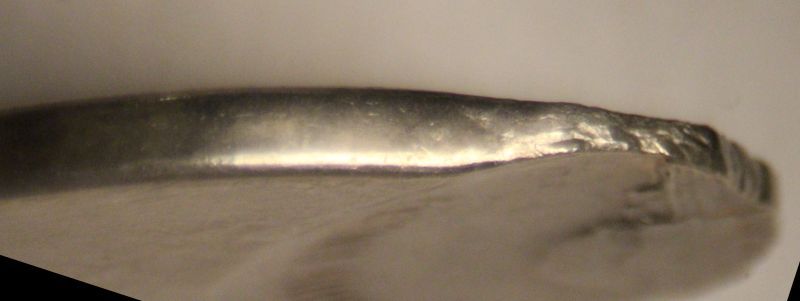Definition: A lumpy texture that develops on the unstruck portion of certain broadstrikes and off-center strikes. Known exclusively among 1993-P nickels, the lumpy texture forms during the strike in response to compressive and tensile stresses. The texture may reflect uneven patterns of crystallization (or crystallite merger) occurring within the underlying metal. However, the actual etiology is obscure.
This massively expanded, broadstruck 1993-P nickel displays stress-induced surface irregularities on the unstruck perimeter and along the edge.
Stress-induced surface irregularities appear on both sides of the unstruck portion of this off-center 1993-P nickel. The lumpiness is strongest near the upset edge and next to the internal margin of the die-struck tongue of metal. Compressive stresses generated during the strike produced a lumpy texture along the outer edge of the struck tongue.





